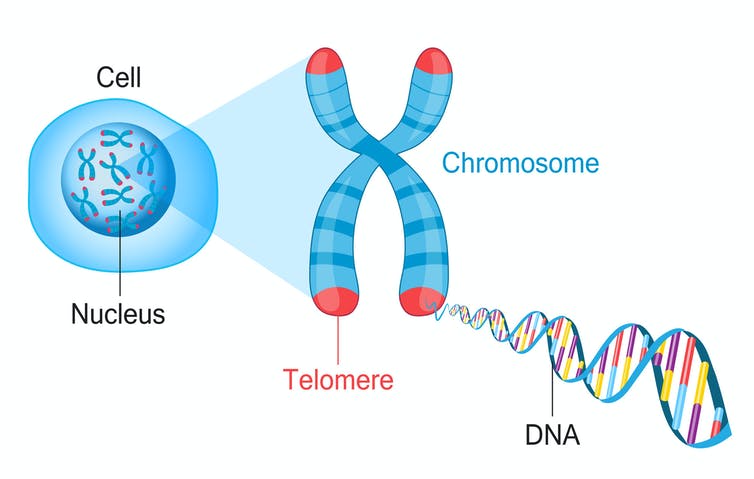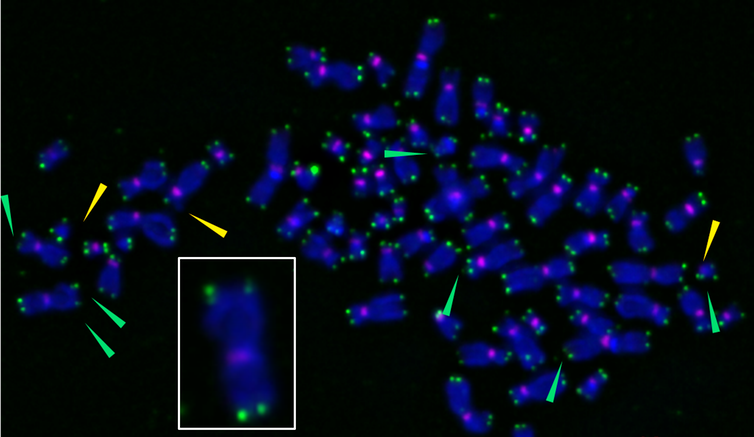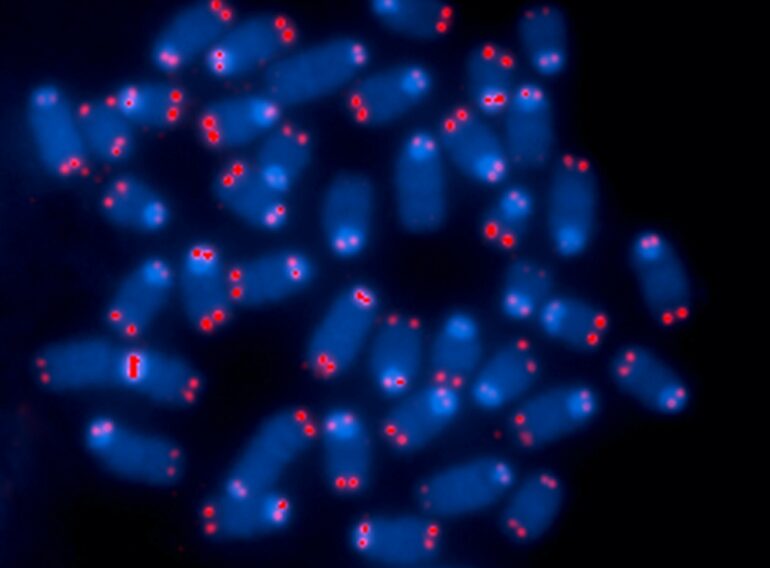The Research Brief is a short take about interesting academic work.
The big idea
Damage to the ends of your chromosomes can create “zombie cells” that are still alive but can’t function, according to our recently published study in Nature Structural and Molecular Biology.
When cells prepare to divide, their DNA is tightly wound around proteins to form chromosomes that provide structure and support for genetic material. At the ends of these chromosomes are repetitive stretches of DNA called telomeres that form a protective cap to prevent damage to the genetic material. However, telomeres shorten each time a cell divides. This means that as cells divide more and more as you age, your telomeres become increasingly shorter and more likely to lose their ability to protect your DNA.

Telomeres serve as protective caps at the ends of each chromosome.
FancyTapis/iStock via Getty Images
Damage to genetic material can lead to mutations that cause cells to divide uncontrollably, resulting in cancer. Cells avoid becoming cancerous when their telomeres become too short after dividing too many times and potentially accruing damage along the way, however, by entering a zombielike state that stops cells from from dividing through a process called cellular senescence.
Because they are resistant to death, senescent – or “zombie” – cells accumulate with age. They can be beneficial to health by promoting senescence in nearby cells at risk of becoming cancerous and attracting immune cells to clear out cancer cells. But they can also contribute to disease by impairing tissue healing and immune function, and by secreting chemicals that promote inflammation and tumor growth.
We wanted to know if direct damage to telomeres can be sufficient to trigger senescence and make zombie cells. In order to figure this out, we needed to confine damage just to the telomeres. So we attached a protein to the telomeres of human cells grown in the lab. Then we added a dye to the protein that makes it sensitive to light. Shining a far-red light (or light with a wavelength slightly shorter than infrared light) on the cells induces the protein to produce oxygen free radicals – highly reactive molecules that can damage DNA – right at the telomeres, sparing the rest of the chromosome and the cell.
We found that direct damage to the telomeres was sufficient to turn cells into zombies, even when these protective caps weren’t shortened. The reason for this, we discovered, was likely a result of disrupted DNA replication at the telomeres that leaves chromosomes even more susceptible to damage or mutations.

The telomeres (green) at the tips of chromosomes (blue) damaged by free radicals become fragile (green arrows) and trigger senescence.
Ryan Barnes/Opresko Lab, CC BY-NC-ND
Why it matters
Telomeres naturally shorten with age. They limit how many times a cell can divide by…
